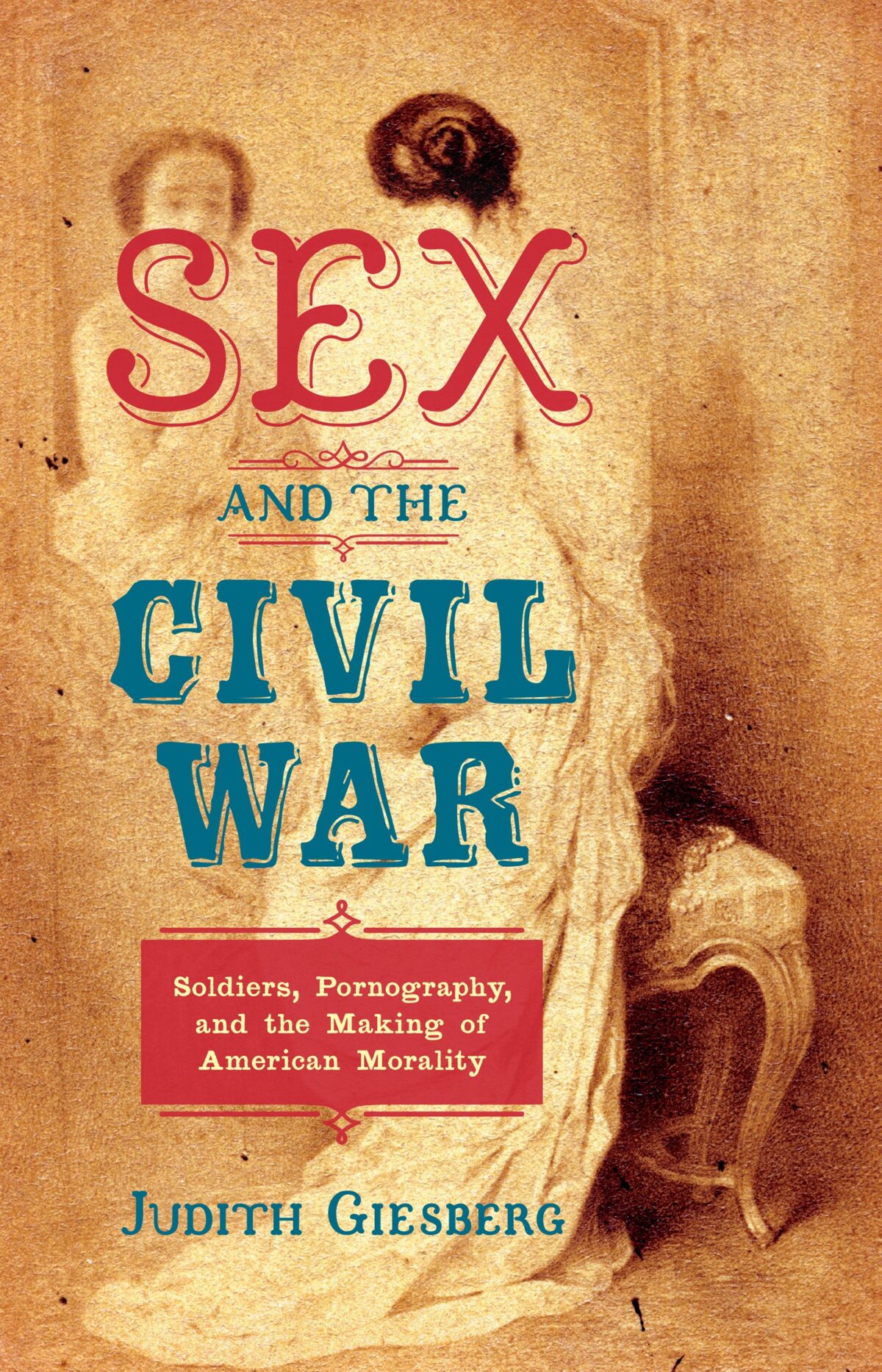by Bryan & Heather
Giesberg, Judith. Sex and the Civil War: Soldiers, Pornography, and the Making of American Morality. Chapel Hill, NC: University of North Carolina Press, 2017.
Over time, “Victorian” has become synonymous with prudish values, particularly when it comes to gender norms and sexual mores. And yet, as any social historian or high school principal will tell you, there is always a gap between how people are supposed to behave and how they actually behave, and between how they act in formal situations and how they act informally. In reality, the nineteenth century was filled with vibrant, non-conforming behaviors at all levels and in all genders (as Heather has begun documenting in a series of her own here on Concerning History). One rich vein of inquiry in this regard is the behavior of soldiers during the American Civil War, when millions of men found themselves campaigning outside the bounds of polite society, surrounded only by other men—a vein which has largely lain untapped. Either out of a sense of propriety, a lack of interest in examining less martial aspects of the common soldier’s experience, or a dearth of sources (more on that below), studies on the sex lives of Civil War soldiers have been virtually nonexistent. Enter Judith Giesberg’s Sex and the Civil War.
Sex and the Civil War examines American attitudes towards pornography as influenced by the American Civil War, and how those attitudes resulted in the American penchant for driving the government to legislate and enforce sexual and reproductive morality. From the initial explosion of pornography through the US mail, to Congress’s efforts to clamp down on its circulation, to the efforts of reforming organizations to safeguard the morals of young men that culminated most famously in the career of Civil War veteran Anthony Comstock, Giesberg paints a compelling picture (accompanied by plenty of actual pictures) of a nation increasingly concerned with what they saw as the moral, spiritual, and even physical degradation of a generation of men caused by the creation of a shared uncouth culture of pornography in the camps. In doing so, Giesberg deftly weaves in larger themes of Victorian masculinity, both martial and spiritual, and fascinating commentary on what was and was not considered obscene. Perhaps the greatest conclusion of Sex and the Civil War is that pornography is not so much a definition but an argument, formed from the delineation of what people contend should not be appropriate and what is actually harmless (such as Classical art or certain abolitionist rhetoric that employed motifs of sexual violence).
Sex and the Civil War’s greatest weakness comes in its length, or lack thereof. It is a whirlwind work of history, coming in at only 108 pages. This is partly a result of being adapted from lectures given by Giesberg in UNC Press’s Steven and Janice Brose Lectures in the Civil War Era series, but also possibly of the lack of appropriate sources alluded to above. Due to the inherently taboo nature of Giesberg’s subject matter, most primary sources she could employ have been destroyed, and few still exist outside of private collections. As a result, she is forced to build much of her narrative indirectly through such sources as courts martial for behavior unbecoming a gentleman and the papers and legislation of pornography’s opponents. This scarcity of sources, combined with the work’s abbreviated length, results in a large amount of “telling” Giesberg’s analysis through historiographical references and various assertions, but not a whole lot of “showing” her conclusions’ merit through sourcework. Sex and the Civil War feels like it could have easily run double, triple, even quadruple its current length, laying bare the spectrum of gendered and sexual expectations of a whole martial generation.
Still, in Sex and the Civil War can be found a work of history that, while not necessarily groundbreaking in the purest sense of the word, certainly provides a refreshing, much-needed twist on what is always in danger of becoming the most stale, over-trod subdiscipline of American history. While it may only scratch the surface of a fascinating, unorthodox topic, we definitely recommend this intriguing introduction to any interested in breathing new life into their Civil War history.
